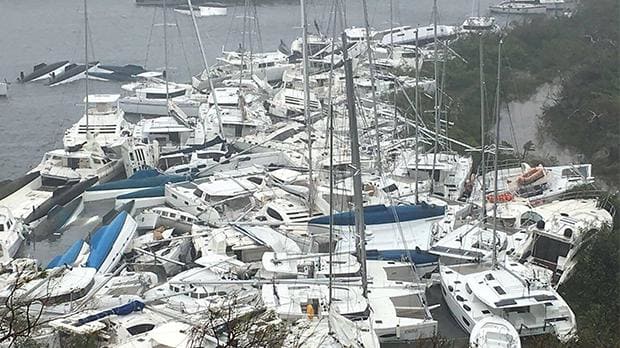Hurricane Irma, one of the most powerful hurricanes to strike the Caribbean and the southeast U.S., hit the U.S. & U.K. Virgin Islands before heading to Puerto Rico on Sep. 6, 2017 . Puerto Rico Governor Ricardo Roselló stated that the storm was more dangerous than anything they’ve ever seen and compromised much of the island’s infrastructure. Despite the damage to infrastructure and at least 1.5 million power outages, Puerto Rico avoided the worst of the hurricane; yet the nascent destruction of Irma still caused three deaths.
The dual-island nation of Antigua and Barbuda was devastated by the storm. Prime Minister Gaston Browne said 95% of the buildings on Barbuda are damaged and the island is “literally underwater” and “barely inhabitable.” An estimated 50% of Barbuda is now homeless. Two people died on the French islands of St. Martin and St. Barthelemy.
Ten deaths were recorded on the French and Dutch islands of St. Martin, St. Barts, and Anguilla. The French government states that their side of St. Martin has sustained at least €1.2B ($1.44B) in damages. On the Dutch side of St. Martin, more than two thirds of homes were destroyed by the storm.
Haiti and the Dominican Republic were both less damaged than expected, with 200,000 evacuating the latter before the storm arrived.
Approximately one million people were evacuated from Cuba before the storm hit landfall on Sep. 8, yet the storm still killed ten.
On Sep. 9, Irma, at this point a category 4 storm, hit landfall in Florida. Due to heavy flooding in the lower keys, boats from the dock lay around in the streets. Irma continued its path up Florida’s Gulf Coast, eventually becoming a category 1 storm as it hit major cities like Tampa and Naples.
On Sep. 11, the storm moved into Georgia, where Governor Nathan Deal expanded a statewide state of emergency. On Monday and Tuesday, now Tropical Depression Irma went as far inland as northern Alabama and Tennessee. Despite its inland path, Irma still caused excessive flooding on the Atlantic coasts of Georgia and South Carolina.
At least 65 people have died in the hurricane, including 22 in the U.S. — 12 of which were in Florida. Florida Governor Rick Scott checked medical facilities in Florida after six died at a nursing home that was operating without power for days.
Hurricane Irma hit the Caribbean as a category 5 storm, sustaining winds of 118 mph. Irma’s maximum sustained winds of 185 mph are the strongest winds at landfall in recent history, tying with a hurricane that struck the Florida Keys in 1935.

Be First to Comment